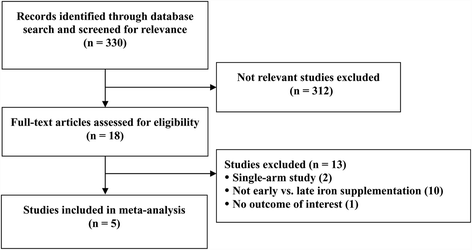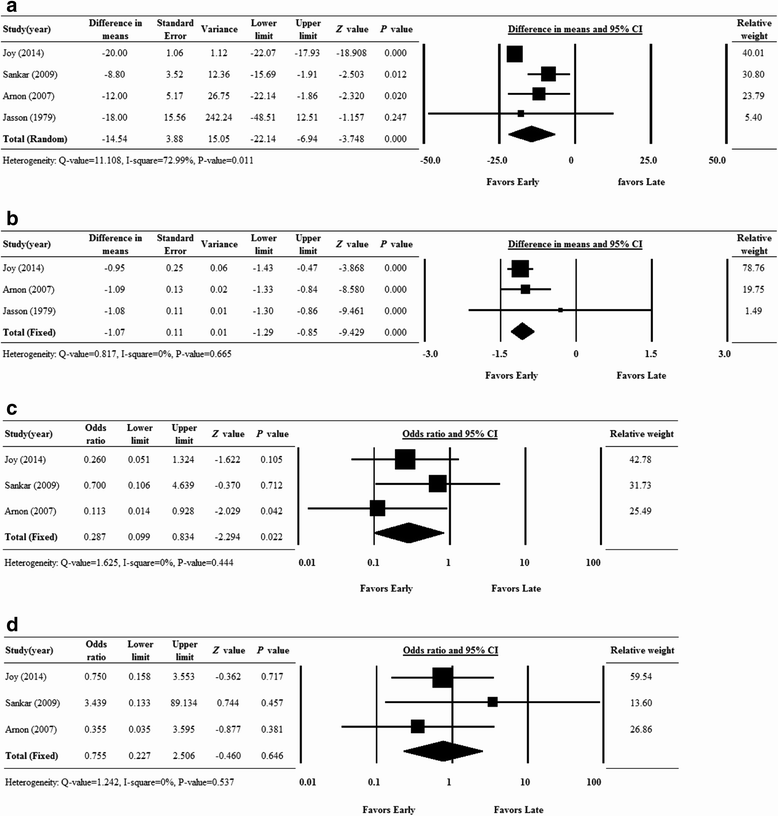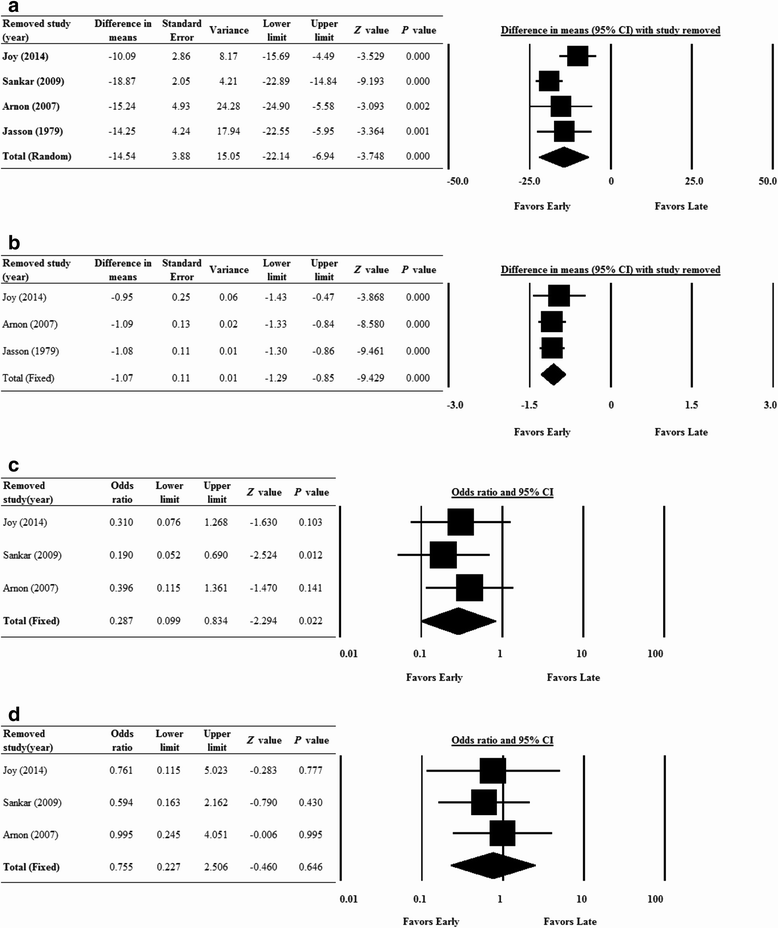Early and late Iron supplementation for low birth weight infants: a meta-analysis
- PMID: 25888053
- PMCID: PMC4407792
- DOI: 10.1186/s13052-015-0121-y
Early and late Iron supplementation for low birth weight infants: a meta-analysis
Abstract
Background: Iron deficiency in infancy is associated with a range of clinical and developmentally important issues. Currently, it is unclear what is the optimal timing to administer prophylactic enteral iron supplementation in preterm and very low birth weight infants. The objective of this meta-analysis was to evaluate early compared with late iron supplementation in low birth weight infants.
Methods: PubMed and Cochrane Library databases were searched up to May 10, 2014 for studies that compared the benefit of early and late iron supplementation in infants of low birth weight. Sensitivity analysis was carried out using the leave one-out approach and the quality of the included data was assessed.
Results: The data base search and detailed review identified four studies that were included in the meta-analysis. The number of included patients was 246 (n=121 for early supplementation and n=125 for late supplementation) and the majority were premature infants. Across studies, early supplementation ranged from as early as enteral feeding was tolerated to 3 weeks, and late supplementation ranged from 4 weeks to about 60 days. Early treatment was associated with significantly smaller decreases in serum ferritin and hemoglobin levels (P<0.001). In addition, the rate of blood transfusions was lower with early compared with late iron supplementation (P=0.022). There was no difference between early and late supplementation in the number of patients with nectorizing enteroclitis (>bell stage 2) (P=0.646). Sensitivity analysis indicated no one study overly influenced the findings and that the data was reliable.
Conclusion: In conclusion, early iron supplementation resulted in less a decrease in serum ferritin and hemoglobin levels in infants with low birth rate. However, caution should be used when treating infants with iron so as not to result in iron overload and possibly negative long-term effects on neurodevelopment.
Figures



References
Publication types
MeSH terms
Substances
LinkOut - more resources
Full Text Sources
Other Literature Sources
Medical

